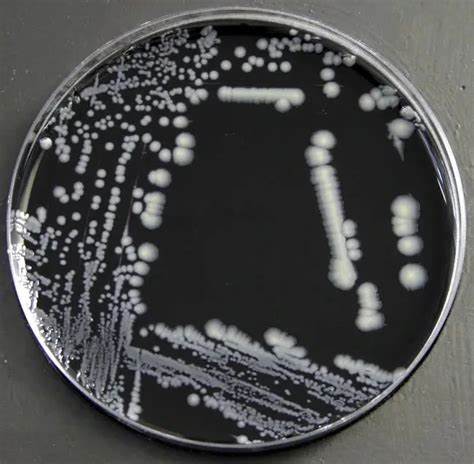BCYE Agar species are isolated and cultivated using agar, a specific culture medium. It can also stimulate the development of other picky organisms. A form of selective growth medium that is used to cultivate or grow specific bacteria, especially Legionella pneumophila, a Gram-negative bacterium. Buffered Charcoal Yeast Extract, or BCYE Legionella species are isolated and cultivated using agar, a particular culture medium. It can also stimulate the development of other picky organisms. It is advised to use it to develop and isolate Legionella spp. from water and other samples that could contain the bacterium. Additionally, it has been applied to the laboratory diagnosis of Nocardia spp, Francisella, and Acanthamoeba keratitis.

Table of Contents
Composition of BCYE Agar
- 10.0 g of yeast extract.
- 2.0 g of charcoal, 10.0 g of ACES buffer, and 1.0 g of α-ketoglutarate
- 0.25 g of ferric pyrophosphate with 0.4 g of L-cysteine HCl
- 15.0 g of Agar
- 2.0 g of activated charcoal
- KOH, potassium hydroxide: to get the pH to 6.9 ± 0.2 Up to one litre of distilled water
Principles of BCYE Agar
The idea behind it is that it offers a nutrient-rich environment that facilitates the development of species of Legionella that are ordinarily hard to cultivate. The medium’s charcoal serves to neutralize harmful compounds, and L-cysteine and iron salts provide the growth nutrients that are required. Because the buffer system keeps the pH at an ideal level, these picky organisms may thrive more easily. The amino acid along with ferric pyrophosphate helps for the growth of Legionella. The media contains charcoal, which acts as detoxicant and activated charcoal decomposes hydrogen peroxide, a metabolic product toxic to Legionella species, and may also collect carbon dioxide and modify surface tension.
Preparation of BCYE Agar
- Put 20 grams into 500 millilitres of purified water.
- To fully dissolve the medium, bring the temperature to a boil.
- Autoclave at 15 lbs pressure (121°C) for 15 minutes, then let cool to 50°C to sterilize.
- Add the aseptically rehydrated sterile contents of one vial of each Legionella supplement.
- Stir thoroughly and continuously pour to guarantee that the charcoal particles are dispersed equally.
Result of BCYE Agar
Positive Growth
Colonies of Legionella appear as white, grey, or blue-grey and may have a ground-glass appearance.
Negative Growth
The absence of colonies indicates no Legionella present.
Quality Control
Ensure the medium supports Legionella pneumophila’s growth and inhibits non-target organisms’ growth.
Uses of BCYE Agar
- The isolation and tentative identification of Legionella will be conducted using this medium.
- Legionella is isolated from clinical and environmental samples using this base media.
Limitation of BCYE Agar
- Colonies from pure culture should be subjected to biochemical, immunological, molecular, or mass spectrometry tests for thorough identification.
- It is also advised to inoculate non-selective and selective plates simultaneously and to employ multiple types of medium for isolating Legionella species.
- Certain strains may be found to grow badly or not at all on this medium because of variations in nutrition.
- Although the Centers for Disease Control and Prevention (CDC) advises incubating environmental samples with 2.5% CO2, the only species known to develop more rapidly in this setting is L. gormanii.
- When handling Legionella species, it is important to avoid aerosol formation.
Frequently Asked Questions
What is BCYE Agar?
Buffered Charcoal Yeast Extract Agar is a specialized growth medium designed primarily for the isolation and cultivation of Legionella species and other fastidious organisms.
What is the principle behind BCYE Agar?
It provides a nutrient-rich environment that supports the growth of Legionella spp. The charcoal neutralizes toxic substances, while L-cysteine and iron salts supply essential growth factors. The buffer system maintains an optimal pH, facilitating the growth of these fastidious organisms.
How should it be stored?
Prepared plates should be stored in a refrigerator at 2-8°C. Unopened dehydrated medium should be stored in a cool, dry place.
Related Article

